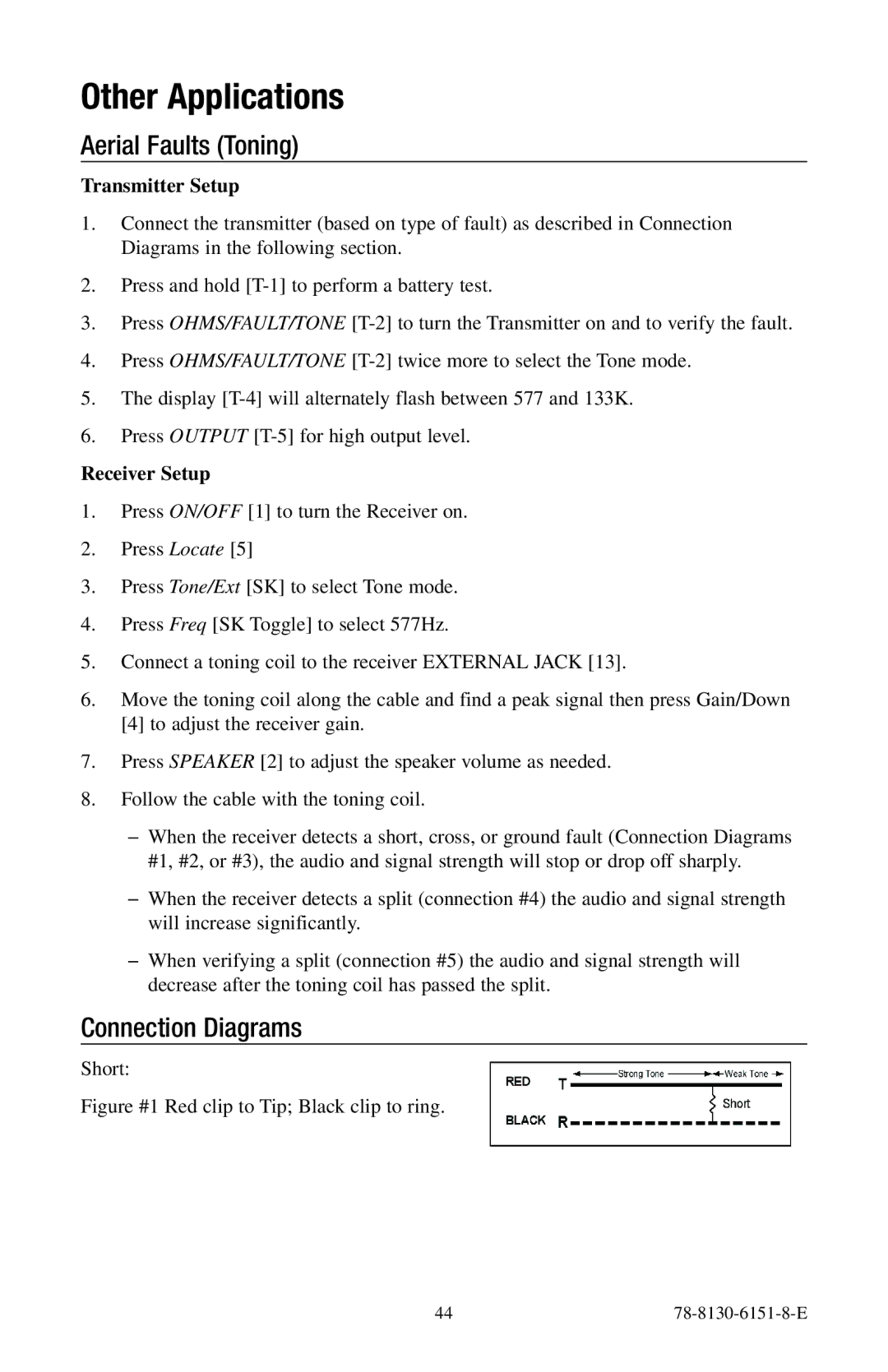
Other Applications
Aerial Faults (Toning)
Transmitter Setup
1.Connect the transmitter (based on type of fault) as described in Connection Diagrams in the following section.
2.Press and hold
3.Press OHMS/FAULT/TONE
4.Press OHMS/FAULT/TONE
5.The display
6.Press OUTPUT
Receiver Setup
1.Press ON/OFF [1] to turn the Receiver on.
2.Press Locate [5]
3.Press Tone/Ext [SK] to select Tone mode.
4.Press Freq [SK Toggle] to select 577Hz.
5.Connect a toning coil to the receiver EXTERNAL JACK [13].
6.Move the toning coil along the cable and find a peak signal then press Gain/Down [4] to adjust the receiver gain.
7.Press SPEAKER [2] to adjust the speaker volume as needed.
8.Follow the cable with the toning coil.
−−When the receiver detects a short, cross, or ground fault (Connection Diagrams #1, #2, or #3), the audio and signal strength will stop or drop off sharply.
−−When the receiver detects a split (connection #4) the audio and signal strength will increase significantly.
−−When verifying a split (connection #5) the audio and signal strength will decrease after the toning coil has passed the split.
Connection Diagrams
Short:
Figure #1 Red clip to Tip; Black clip to ring.
44 |
|
